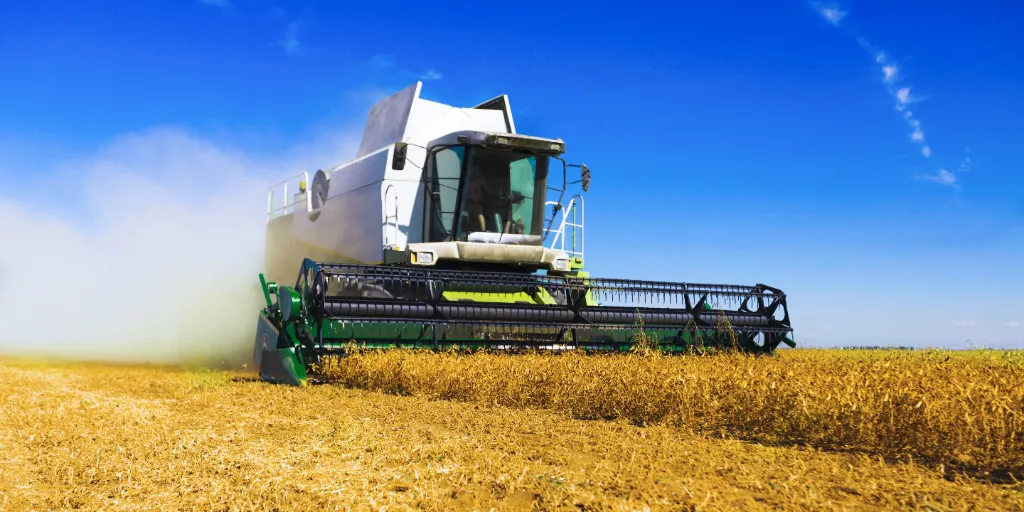From ClimateREALISM
By Linnea Lueken
A recent article in Forbes, titled “Climate Change’s Toll On Global Agriculture: A Looming Crisis,” claims that climate change is “wreaking havoc” on cocoa, olive oil, rice, and soybeans. This is false. Certain regions, like those the author Monica Sanders focuses on, are seeing bad seasons for these crops, but it is not indicative of long-term trends at those locations or globally. Thus it cannot be attributed to the modest warming of the past hundred-plus years, and certainly not due to human CO2 emissions.
Sanders claims that important crops “such as cocoa, olive oil, rice, and soybeans are particularly vulnerable, and their declining yields due to climate-induced stressors have far-reaching implications.”
Beginning with cocoa, Sanders focuses on West Africa, which she says “has been hit hard by dry weather conditions exacerbated by El Niño,” and quotes a climate scientist from Ghana who claims that the frequency and intensity of droughts are increasing and it’s making “cocoa cultivation increasingly untenable.”
Agricultural data for the region suggest that this claim is false.
This year and 2023 have seen some reduced cocoa yields, but it is an outlier for the overall trend. If climate change was making cocoa production “untenable” one would not expect the record production to have occurred as recently as 2022. According to the latest data from the United Nations Food and Agriculture Organization (FAO) covering the last three decades of climate change:
- West African cocoa production has increased 167 percent;
- West African cocoa yields have fluctuated, but overall increased 8 percent. (See figure below)
Climate Realism has gone into greater depth about the alarm surrounding cocoa beans and climate change here, here, and here.
Next, regarding olive oil, we see a similar story, and again, Climate Realism has already debunked these claims here, here, and here. FAO data discussed in those posts show olives set production records 11 times between 1990 and 2022.
Rice is a particularly puzzling crop to become alarmed about. Saunders writes that it is “under threat from climate change,” citing Italy, which produces half of the European Union’s rice, and India.
Italy is an interesting case, their rice production and yield has fallen off significantly since at least 2020, and their last yield record was set in 2017, production record in 2012. Though from the FAO data, production through 2020 was within normal Italian rice seasonal fluctuation ranges. 2022 represented the big drop off due to the year’s drought. (See figure below)

There is no reason to believe the present drought is permanent and there is no long-term trend for increasing droughts in Italy, nor as the Earth has modestly warmed, has Italy displayed a consistent rice crop decline. Rather, rice farmers in Italy are experiencing what farmers around the globe have always experienced, seasonal crop declines and failures tied directly to short-term weather fluctuations. This is a temporary, though for the farmers painful, phenomenon.
As importantly, Saunders fails to acknowledge that part of the reason for the decline in rice has nothing to do with weather but rather reflects a nearly 12 percent decline in the land devoted to growing rice over the past 14 years.
That Sanders claims rice in India is likewise threatened is absurd. Rice production in India has broken records nearly every year since 2015, and since the 1990s has done nothing but trend upwards overall.
Since 1990, Indian rice has:
- Seen production increases of 75 percent;
- Seen yield increased of 61 percent. (See figure below)

Soybeans in both the United States and South America have likewise seen increasing production and yields over the past three decades of climate change, with no indication of stopping. Climate Realism discussed United States soybean production, here, and in South America, FAO data show that the most recent all-time soybean production record was set in 2021, the most recent record for yield was set in 2017. In short, production and yields have increased during the three decades that climate alarmists have claimed to be the warmest period on record.
Since 1990, South American yields have increased 47 percent, production has increased an incredible 424 percent. (See figure below)


Each section of the Forbes article also gives examples of weather resilience strategies which are worthwhile for farmers to undertake whether or not climate change impacting the weather. In any case, overall crop production is increasing across the board with no climate signal visible.
These facts took only a few minutes to verify using publicly available databases, which should be the minimum for good journalism, but apparently for Forbes, pushing the climate change crisis narrative is too important for facts to get in the way.


